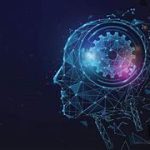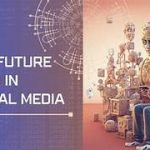The Potential of AI in Reducing Poverty and Inequality
Artificial intelligence (AI) has rapidly evolved into one of the most transformative technologies of the 21st century, with applications spanning across industries, from healthcare to finance and beyond. Its capacity to process vast amounts of data, identify patterns, and make predictions provides unparalleled opportunities to tackle some of humanity’s most pressing challenges, including poverty and inequality. However, the potential of AI to reduce these issues depends on its ethical deployment, equitable access, and governance frameworks. This article delves into the ways AI can help alleviate poverty and inequality, along with the challenges and strategies for ensuring its effective use.
Understanding Poverty and Inequality
Poverty refers to a lack of access to basic needs such as food, shelter, education, and healthcare. According to the World Bank, approximately 9.2% of the global population lived on less than $2.15 a day in 2022. Inequality, on the other hand, encompasses disparities in income, wealth, access to opportunities, and social mobility. These issues are interconnected; reducing poverty often requires addressing the systemic inequalities that perpetuate it.
AI Applications in Addressing Poverty
- Enhancing Education Access
Education is one of the most powerful tools for breaking the cycle of poverty. AI-powered solutions can democratize access to quality education by:
- Personalized Learning: AI-driven platforms, such as adaptive learning systems, tailor educational content to individual needs, ensuring that students from diverse backgrounds receive the support they require.
- Remote Learning: AI enables virtual classrooms and interactive content delivery, reaching marginalized communities in remote or underdeveloped regions.
- Language Translation: AI-based translation tools like Google Translate can help overcome language barriers, making educational resources accessible to non-native speakers.
- Improving Healthcare Outcomes
AI is revolutionizing healthcare delivery, particularly in underserved areas, by:
- Predictive Analytics: AI models can predict disease outbreaks, enabling timely interventions and resource allocation.
- Telemedicine: AI-driven telehealth platforms connect patients in rural areas with medical professionals, reducing travel costs and improving access to healthcare.
- Diagnostics: AI algorithms analyze medical images, lab results, and patient data to provide accurate diagnoses, often at a fraction of the cost of traditional methods.
- Financial Inclusion
Access to financial services is crucial for poverty alleviation. AI facilitates financial inclusion through:
- Credit Scoring: AI-based algorithms assess creditworthiness using alternative data, such as utility payments and mobile phone usage, enabling loans for those without traditional credit histories.
- Microfinance: AI optimizes the distribution of microloans, ensuring funds reach the most vulnerable populations.
- Fraud Detection: AI safeguards financial transactions, building trust in digital banking systems.
- Agricultural Advancements
Agriculture employs millions in low-income countries, and AI can enhance productivity and sustainability through:
- Precision Farming: AI systems analyze weather patterns, soil conditions, and crop health, guiding farmers to make informed decisions.
- Supply Chain Optimization: AI helps reduce food wastage by optimizing logistics and matching supply with demand.
- Access to Markets: Platforms powered by AI connect farmers directly with buyers, eliminating intermediaries and improving income.
Tackling Inequality with AI
- Reducing Income Disparities
AI has the potential to address income inequality by:
- Job Creation: AI drives innovation, creating new industries and job opportunities in areas such as data science, machine learning, and AI ethics.
- Upskilling and Reskilling: AI-powered platforms offer training programs to help workers transition to higher-paying, technology-driven roles.
- Improving Governance and Public Services
Governments can leverage AI to:
- Enhance Efficiency: AI streamlines public service delivery, reducing corruption and ensuring resources are allocated effectively.
- Data-Driven Policies: AI analyzes socioeconomic data to design targeted interventions that address specific disparities.
- Bridging Digital Divides
The proliferation of AI could widen digital divides if not managed responsibly. To prevent this:
- Infrastructure Investment: Governments and organizations must invest in digital infrastructure to ensure equitable access to AI technologies.
- Affordable Access: Subsidized internet and devices can enable low-income populations to benefit from AI-powered solutions.
Challenges in Implementing AI for Social Good
Despite its potential, AI’s role in reducing poverty and inequality faces several challenges:
- Bias and Fairness
AI systems are only as unbiased as the data they are trained on. Historical inequalities embedded in datasets can perpetuate discrimination. Ensuring fairness requires diverse and representative data and robust auditing mechanisms.
- Privacy Concerns
AI often relies on extensive personal data, raising concerns about privacy and surveillance. Transparent data practices and strict regulations are necessary to protect individual rights.
- Job Displacement
While AI creates new job opportunities, it also automates tasks, leading to job losses in certain sectors. A balanced approach to automation and human employment is essential.
- Ethical Concerns
The ethical use of AI involves addressing questions about accountability, decision-making processes, and the equitable distribution of AI benefits.
- Access Inequities
The high cost of AI development and deployment can exclude low-income countries and marginalized communities. Collaborative efforts between governments, nonprofits, and private sectors are needed to bridge these gaps.
Strategies for Maximizing AI’s Impact
- Policy and Regulation
Governments must establish policies that promote ethical AI use, ensuring it benefits all segments of society. This includes:
- AI Ethics Committees: Independent bodies to oversee AI deployment and mitigate risks.
- Inclusive Policies: Initiatives to make AI accessible to underserved populations.
- Collaboration
Public-private partnerships can pool resources and expertise to develop AI solutions targeting poverty and inequality.
- Education and Awareness
Raising awareness about AI’s potential and equipping individuals with digital skills are crucial steps toward inclusive adoption.
- Research and Innovation
Investing in research focused on AI for social good can yield innovative solutions to complex challenges.
Conclusion
Artificial intelligence holds immense potential to address poverty and inequality, from enhancing access to education and healthcare to enabling financial inclusion and improving governance. However, realizing this potential requires a concerted effort to overcome challenges related to bias, privacy, and access. By fostering collaboration, enacting inclusive policies, and investing in education and infrastructure, AI can become a powerful tool for creating a more equitable world. The journey toward leveraging AI for social good is not without hurdles, but with the right strategies, its promise can be transformed into reality.


